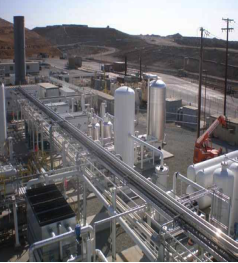Waste Management sees dollar signs in our organic waste


Waste Management is bullish on organic waste. The company’s Organic Growth Group has recently established a number of partnerships (with companies including Terrabon, Harvest Power, Enerkem Inc. and Linde) to create value from waste streams. Currently, Waste Management’s landfill gas-to-energy projects use decomposing organic materials to generate enough energy to power 400,000 homes every day.
Last week I talked to Timothy Cesarek, managing director of the company’s Organic Waste Solutions Group and Organic Growth Group.
Organic waste—does this include just the material someone would compost on an individual basis, or is it more?
It’s similar to what people consider to be biomass: food waste, yard waste, wood waste; biosolids (digested or undigested sewage) and renderings (fats, oils, greases that come from slaughterhouses). We’re trying to create more value and beneficial use for these materials.
How much organic waste do you process?
Waste Management manages 150 million tons of waste on an annual basis. About 50 million tons of that is organic in nature. (*See editors note for clarification.)
What are the incentives for turning this organic waste into energy?
It helps us meet our goals. Our CEO has said we want to create more value out of the materials we manage than our competition. Plus, we can help our customers divert waste from landfills. We get people to recycle plastics, and they end up in other products. At the end of the day, the same is true for organic waste materials. They can be used as a feedstock for the production of biogas. We are taking landfill gas and compressing/liquefying it and using it as fuel in our trucks. In the future these materials will end up in the Terrabon process [waste-to-fuel conversation; Terrabon’s MixAlco technology converts biomass to green gasoline] or anaerobic digestion. Also these materials can be gasified, and you use chemistry to turn it back into hydrocarbons—products we use as chemicals and fuels today.
 What is the organic waste worth?
What is the organic waste worth?
You can compost today, and the value of that compost may be worth, let’s just say, 50 bucks a ton. But if I can convert it to gasoline, it may be 200 bucks a ton. And if I can convert to specialty chemicals that could be produced through these processes, it may be $3,000 a ton. Just burning organic waste is a lower-value opportunity. The higher-value opportunities have yet to be developed.
How much of Waste Management’s revenues are from waste?
We process 8.5 million tons of recyclable materials a year. Once we start to prove up some of these value propositions, you can start to measure the economic benefit.
As a society, we’re trying to lower the amount of waste we produce, yet you are making money from waste. Is there any chance that one day there won’t be enough waste for all the energy you expect to produce?
We have to eat, so there will always be food waste. We make paper, so there is wood waste, though that may diminish over time. In my opinion there will always be organic waste materials. Our goal is to capture a higher value of those waste materials. With that higher value, you could create a business that has more value than what Waste Management has today. That’s part of what the Organic Growth Group is doing.
What are some of the leading methods of composting, and will one eventually take over? Does it vary depending on the region?
It varies based on the region. Over time, various processes will rise to the top. Those that have the ability to measure and provide more environmental control will in my opinion take hold. Some composting processes are very difficult to measure, things such as how much carbon dioxide is being emitted. Many times the economics don’t support using some of these methods in a particular market. At the end of the day it’s got to come down to procuring profits.
What markets are you looking at?
In some markets there’s a high value for the compost being made. In other markets, people look at compost as a medium to put into the soil, and the value of the compost isn’t as high. Today’s compost may be somebody’s chemicals tomorrow. If you take the earlier hypothesis that we can gasify compost and produce a fuel, it creates a different economic dynamic.
Where are you in terms of setting up facilities?
This is a new business. We’re in the process now of determining the feasibility of where Waste Management will be putting in various facilities to manage organic waste. It’s driven regionally and by customer demand. The western seaboard and Northeast are regions where beneficial reuse--yard waste diversion, zero waste initiatives—are all occurring. Those are the markets we’ll be entering sooner rather than later. Then there’s up-and-coming markets—the Southeast, Midwest and some areas around Bolder, Colorado, where people have a strong feeling of sustainability.
How much education will you have to do with your customers around organic waste?
There’s a strong educational component. The separation of organic materials from other materials--that starts with people better understanding the importance of recycling. We’ll have to educate them on the reuse of these materials. We might have to manage and audit their waste stream. It’s not unlike thinking about oil—there’s heavy crudes, light crudes, sweet crudes, sour crudes. We’re just beginning to understand these organic materials and how to manage it.
Images: Waste Management
Updated, June 7, 2010: Cesarek’s statement that WM handles 150 million tons of waste is incorrect. It is actually 110 million tons, and about 40 million tons is organic, according to a company spokesman.
This post was originally published on Smartplanet.com